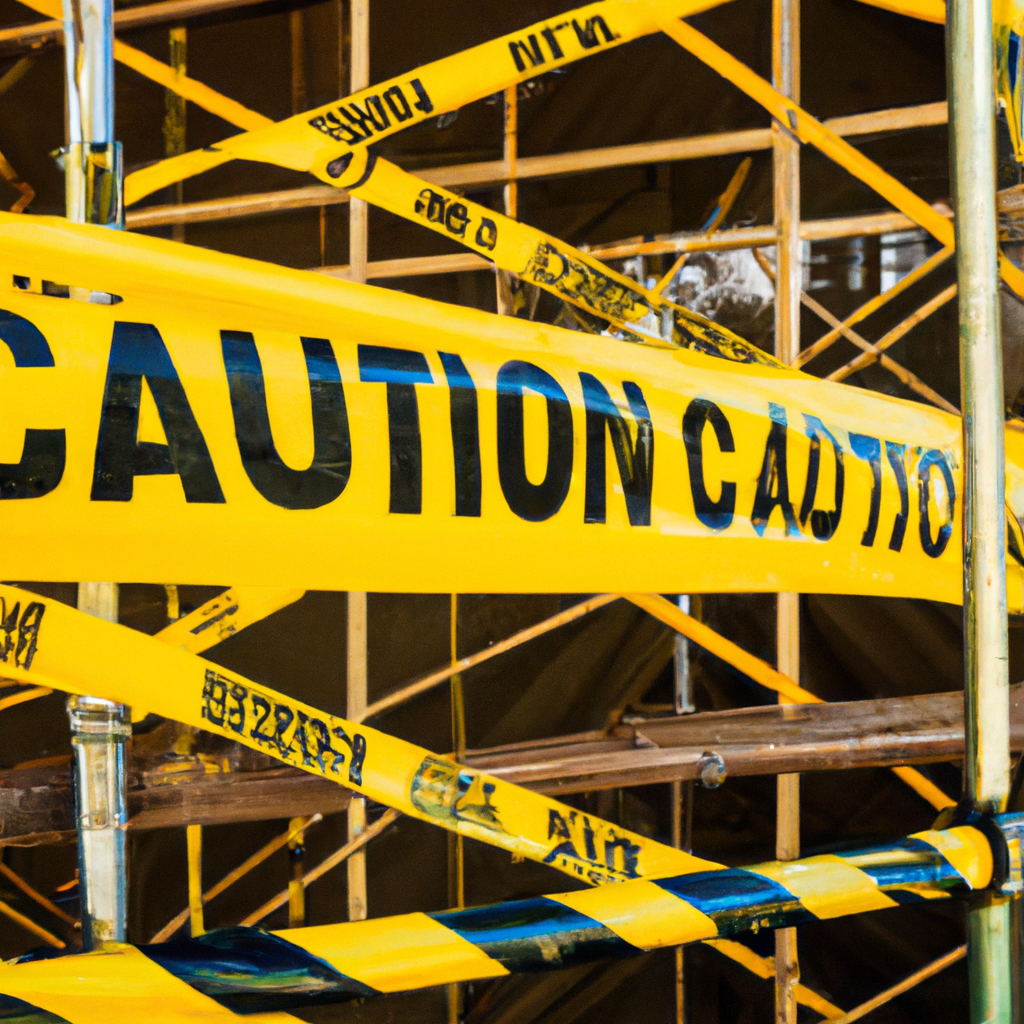Welcome to our comprehensive guide on scaffolding maintenance! As experts in the field, we understand the importance of keeping your scaffolding equipment in top-notch condition to ensure safety and longevity. In this guide, we will provide you with valuable tips and insights on how to properly maintain your scaffolding, so you can extend its lifespan and optimize its performance. Let’s dive in!

Why Is Scaffolding Maintenance Important?
Scaffolding plays a critical role in construction projects, providing a stable and secure platform for workers to perform their tasks at elevated heights. Regular maintenance is crucial for several reasons:
- Safety: Well-maintained scaffolding reduces the risk of accidents and injuries on the job site, protecting both workers and bystanders.
- Efficiency: Properly maintained scaffolding ensures smooth operations and allows workers to complete their tasks efficiently, avoiding unnecessary delays.
- Cost Savings: Regular maintenance helps identify and address potential issues early on, preventing costly repairs or replacements in the future.
Now that we understand the significance of scaffolding maintenance, let’s explore some expert tips to help you maximize the lifespan of your equipment.
1. Conduct Regular Inspections
Regular inspections are the foundation of effective scaffolding maintenance. Follow these steps:
- Visual Inspection: Perform a visual inspection before each use, checking for any visible signs of damage, such as cracks, bends, or missing components.
- Structural Integrity: Ensure the scaffolding structure is stable and secure. Look for loose connections, unstable base plates, or any signs of structural weakness.
- Safety Features: Inspect safety features like guardrails, toe boards, and access points to ensure they are intact and functioning correctly.
- Documentation: Keep detailed records of inspections, including dates, findings, and any necessary repairs or replacements.
By conducting regular inspections, you can identify potential issues early and address them promptly, minimizing the risk of accidents and maintaining the integrity of your scaffolding.
2. Clean and Remove Debris
Maintaining a clean scaffolding not only improves safety but also prevents unnecessary wear and tear. Follow these cleaning guidelines:
- Dust and Debris: Regularly remove dust, dirt, and debris from the scaffolding components using a soft brush or vacuum cleaner.
- Chemical Cleaning: If your scaffolding is exposed to chemicals, such as paint or corrosive substances, follow the manufacturer’s guidelines for proper cleaning to prevent damage.
- Weather Protection: In areas prone to harsh weather conditions, consider using protective covers or tarps to shield the scaffolding from rain, snow, or excessive sunlight.
Remember, a clean scaffolding not only enhances safety but also extends the lifespan of your equipment by preventing corrosion and deterioration.
3. Lubricate Moving Parts
Scaffolding often consists of various moving parts that require proper lubrication to function smoothly. Here’s what you need to know:
- Lubricant Selection: Use a high-quality lubricant recommended by the scaffolding manufacturer. Avoid using excessive amounts, as it can attract dirt and debris.
- Moving Components: Pay particular attention to moving parts such as casters, pulleys, and locking mechanisms. Apply lubricant as per the manufacturer’s instructions.
- Regular Maintenance: Schedule regular lubrication sessions to ensure all moving parts are adequately lubricated, reducing friction and promoting optimal performance.
By keeping the moving parts of your scaffolding well-lubricated, you can prevent premature wear, minimize friction-related issues, and extend the lifespan of your equipment.
4. Address Wear and Tear
Over time, scaffolding components may show signs of wear and tear. It’s crucial to address these issues promptly to maintain the structural integrity of the equipment:
- Replace Damaged Components: If you notice any damaged or worn-out components during inspections, replace them immediately. This includes items like tubes, couplers, or platforms.
- Repair Welds: If any welds on your scaffolding are cracked or damaged, consult a professional welder to repair them promptly. Never attempt to repair welds yourself if you’re not qualified.
- Avoid Overloading: Adhere to weight limits specified by the manufacturer. Overloading can lead to excessive stress on the scaffolding, causing damage to components and compromising safety.
By addressing wear and tear promptly, you can ensure the structural integrity of your scaffolding, preventing accidents and extending its lifespan.
5. Store Properly
Proper storage is essential when it comes to scaffolding maintenance, especially during periods of non-use. Follow these guidelines:
- Clean and Dry: Before storing your scaffolding, make sure it is clean and dry to prevent corrosion or mold growth.
- Secure Storage: Store scaffolding in a secure and well-ventilated area, away from direct sunlight, extreme temperatures, or moisture.
- Disassembly: If feasible, consider disassembling the scaffolding into smaller components for easier storage and transportation.
- Protection: Use covers or protective wraps to shield the scaffolding from dust, dirt, or any potential damage during storage.
By storing your scaffolding correctly, you can prolong its lifespan and ensure it remains in good condition for future use.
Conclusion
In conclusion, proper maintenance is vital for extending the lifespan and optimizing the performance of your scaffolding equipment. By following the expert tips provided in this guide, including regular inspections, cleaning, lubrication, addressing wear and tear, and proper storage, you can ensure the safety, efficiency, and longevity of your scaffolding. Remember, investing time and effort into maintenance today will save you from costly repairs or replacements in the future. Stay proactive, prioritize safety, and make scaffolding maintenance a top priority in your construction projects.


